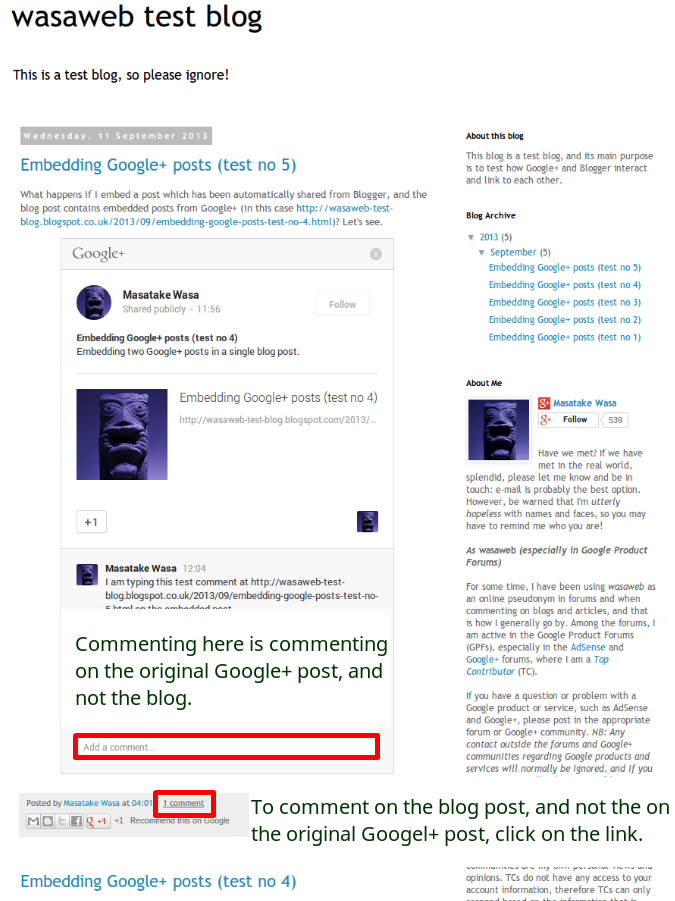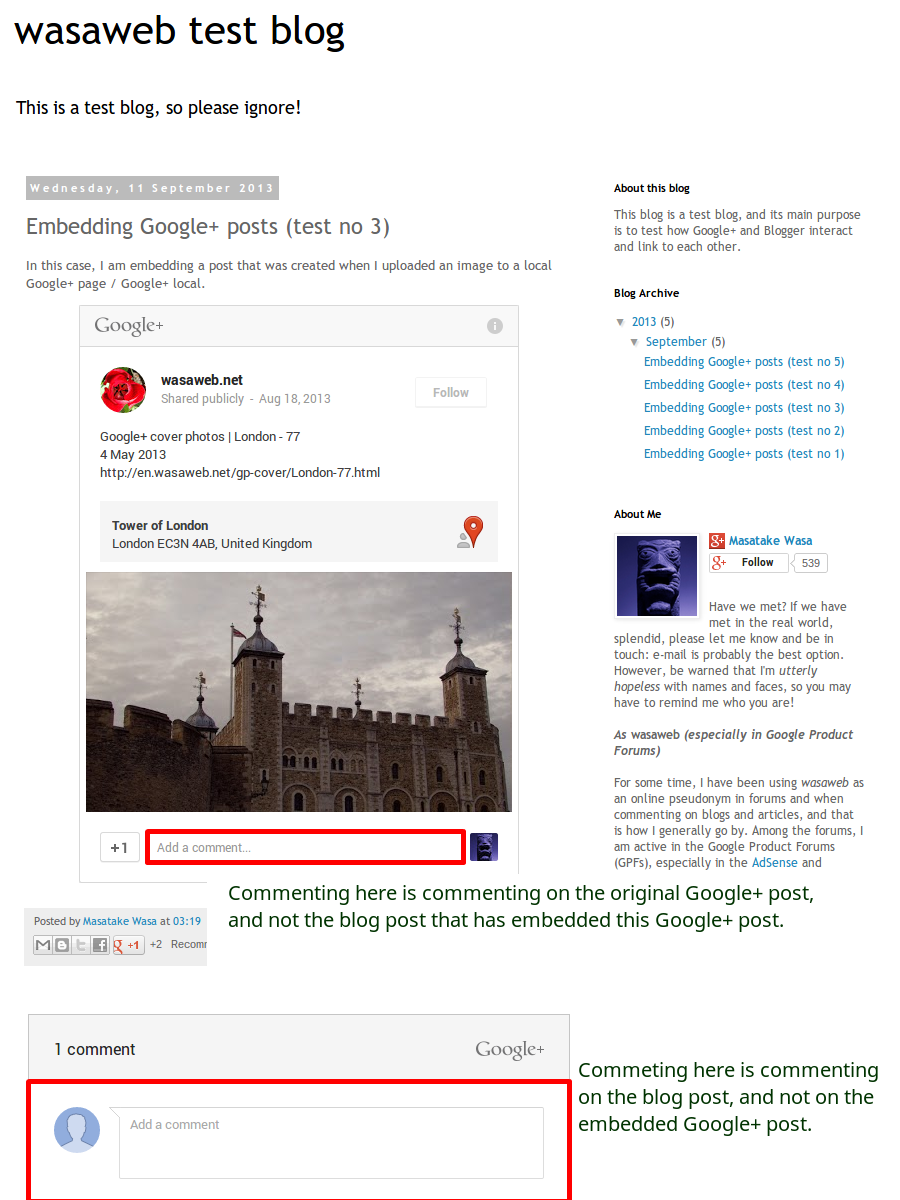Google has recently made it possible to embed public Google+ posts (though not a post shared in a Google+ community) on websites and blogs. This change may lead to two potential issues, among others. Firstly, the original posters on Google+ cannot control by whom and where their posts are embedded, and secondly, there is a very large scope for confusion for those visiting websites and blogs where the Google+ comments platform is used, for example many Blogger blogs, and Google+ posts are embedded.
Google+ Developers Blog: Google+: author attribution & embedded posts
The first issue is about the loss of control by the original poster over his or her post. Unlike resharing, which can be disabled, embedding cannot be disabled as far as I can see, and there is no way for the original poster to know where, by whom, or how many times his or her posts were embedded. As it is possible to embed a Google+ post without a Google+ profile, so it may not be possible to know by whom posts were embedded, but it certainly would be nice to know where and how many times. Embedding Google+ posts is in my view an indirect way of resharing them, without giving the original poster due acknowledgement or notification that reshares generate, as would be the case when the post’s card is flipped, by clicking on the extent to which the post is shared, for example, Shared publicly. Naturally, interactions on the embedded post will credit the original post, and perhaps I am too cynical, but I am dreading a proliferation of spam blogs plastered with advertisements that are essentially collections of other profiles’ and pages’ Google+ posts.
The second issue is about confusion, which arises from commenting on the wrong thing, the embedded post or the blog post, and consequently addressing comments to the wrong person, the poster of the embedded post or the blogger who embedded the post, especially in cases where the blog uses Google+ comments: it is possible that people mistakenly comment on the original post that is embedded in a post, when they intended to post a comment to the blog post, and vice versa. Visually they are similar, so I would not be surprised if mistakes are quite common. The following two screenshots should serve to illustrate this point.
Screenshot 1
Home page of a blog, where multiple posts are shown on the same page.

Screenshot 2
An individual blog post.

I certainly can see the attractions of embedding Google+ posts, and they can be useful, from content creators’ perspective in spreading their content, and also from the perspective of those who wish to embed something to their sites and blogs, because the Google+ posts were useful or moving or otherwise worth embedding. Having said that, I feel at times that Google is trying to pen people inside the Google+ landscape by privileging interactions within Google+, and this is an extension of Google+’s reach outside the Google+ landscape, thus I am somewhat uneasy and ambivalent about this general trend, but I would do the same if I were drawing up strategy at Google.
